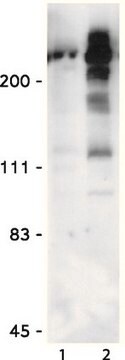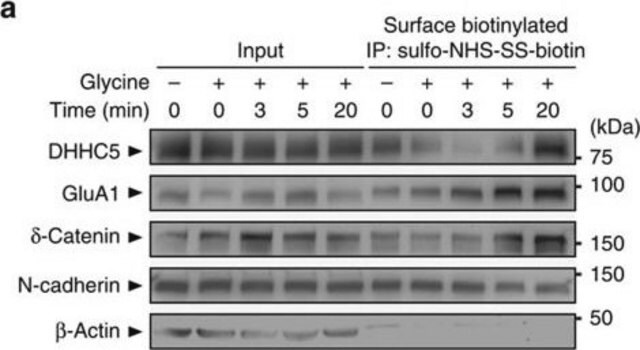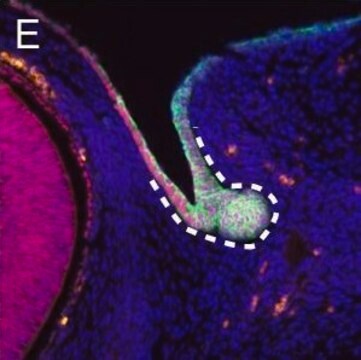04-792
Anti-phospho-CENP-A (Ser7) Antibody, clone NL41, rabbit monoclonal
culture supernatant, clone NL41, Upstate®
About This Item
Prodotti consigliati
Origine biologica
rabbit
Livello qualitativo
Forma dell’anticorpo
culture supernatant
Tipo di anticorpo
primary antibodies
Clone
NL41, monoclonal
Reattività contro le specie
human
Confezionamento
antibody small pack of 25 μL
Produttore/marchio commerciale
Upstate®
tecniche
immunocytochemistry: suitable
multiplexing: suitable
western blot: suitable
Isotipo
IgG
N° accesso NCBI
N° accesso UniProt
Condizioni di spedizione
dry ice
modifica post-traduzionali bersaglio
phosphorylation (pSer7)
Informazioni sul gene
human ... CENPA(1058)
Categorie correlate
Descrizione generale
Specificità
Immunogeno
Applicazioni
Epigenetics & Nuclear Function
Cell Cycle, DNA Replication & Repair
Qualità
Descrizione del bersaglio
Linkage
Stato fisico
Stoccaggio e stabilità
For maximum recovery of product, centrifuge the vial prior to removing the cap. Avoid repeated freeze/thaw cycles, which may damage IgG and affect product performance.
Risultati analitici
Acid extracted proteins from colcemid-arrested HeLa cells
Note legali
Esclusione di responsabilità
Non trovi il prodotto giusto?
Prova il nostro Motore di ricerca dei prodotti.
Codice della classe di stoccaggio
10 - Combustible liquids
Classe di pericolosità dell'acqua (WGK)
WGK 1
Certificati d'analisi (COA)
Cerca il Certificati d'analisi (COA) digitando il numero di lotto/batch corrispondente. I numeri di lotto o di batch sono stampati sull'etichetta dei prodotti dopo la parola ‘Lotto’ o ‘Batch’.
Possiedi già questo prodotto?
I documenti relativi ai prodotti acquistati recentemente sono disponibili nell’Archivio dei documenti.
Il team dei nostri ricercatori vanta grande esperienza in tutte le aree della ricerca quali Life Science, scienza dei materiali, sintesi chimica, cromatografia, discipline analitiche, ecc..
Contatta l'Assistenza Tecnica.








